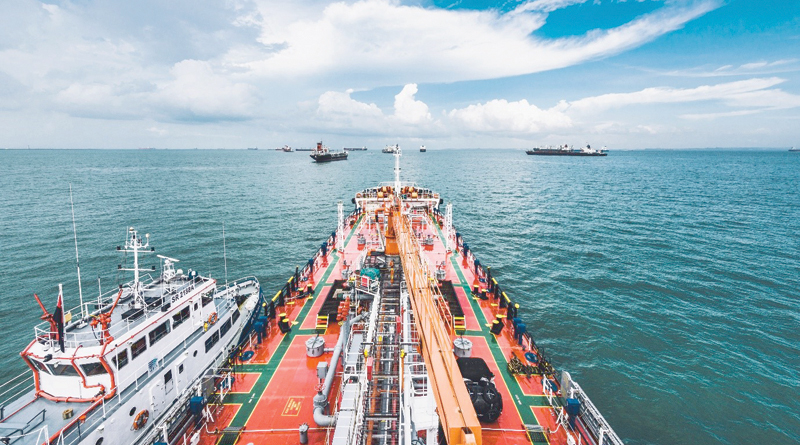

Point of View -
Dan Colover -
IMO2020 will cause significant upheaval to the global shipping and oil refining industries. Even ahead of the January 2020 implementation of the new regulation, trade flows and prices of different crude oil grades have risen. The market is expecting Fujairah to play a key role supplying fuel meeting the new 0.5 per cent maximum sulphur limit to vessels.

Standing as the second busiest bunkering port in the world, Fujairah has two facilities that are able to supply new compliant fuel to the market. These facilities are operated by Uniper and Vitol and combined they are able to supply around 500,000 mt of IMO2020 compliant fuel a month.
Prices of low sulphur heavy crudes that are most suitable to create low sulphur fuel oil have already started to rise. Some of these grades have been processed in the refineries in Fujairah to make low sulphur fuel oil.
Notably Chad’s Doba crude in recent months has seen its value relative to the benchmark Dated Brent hit a record premium as demand for the grade has surged as it is sought after to produce low sulphur fuel oil. The grade on May 29 hit a record $2.50/barrel premium to Dated Brent. While premiums have dipped since, they remain in positive territory and averaged a $1.40/b premium to Dated Brent through June. To put this in context, they averaged minus $3.14/b to Dated Brent during 2018.
Elsewhere, Abu Dhabi’s Murban crude was delivered into the Platts Dubai Markets on Close process for the first time ever at the end of June. This is a reflection of the crude’s quality premium over Dubai having been assessed at its lowest since inception making it more economically viable for delivery into the benchmark.
However, it is not just the price of oil that is being impacted by the impending switch to lower sulphur fuels in vessels. It is also the storage environment.
In Fujairah, weekly stock levels in April climbed to 25.749 million barrels — the highest level since stock reporting began at the start of 2017. The rise was driven by traders building stocks in preparation for the switch to maximum 0.5 per cent fuel on January 1, 2020 which is likely to begin in earnest in late Q3 this year. While the cut-off for switching is January, the industry will need to have completed wholescale adjustment to handling compliant fuels in advance of the deadline and this switching is complex, necessitating using the new compliant low sulphur fuel throughout the logistics chain all the way down to a ships bunker tanks.
Tank storage levels have subsequently fallen slightly from the record highs, with stocks for June standing around 22.3 million barrels, placing them well above the average levels seen in 2018 of 18.1 million barrels.
To aid transparency for bunker market participants, S&P Global Platts launched new marine fuel bunker price assessments that meet the new 0.5 per cent maximum sulphur limit on July 1, 2019. The new assessments cover a number of major ports around the world, including Fujairah, where both delivered and ex-wharf assessments have been launched.
S&P Global Platts also launched new assessments for marine fuel 0.5 per cent derivatives on May 1, 2019, capturing the forward value of the product. These derivatives follow the launch in January 2, 2019 of physical price assessments in Singapore, Rotterdam, Fujairah and the US Atlantic Coast and US Gulf Coast that meet the new 0.5 per cent maximum sulphur limit. This rounds out the suite of IMO price assessments six months ahead of the January 2020 implementation of the new shipping fuel regulations.
Crude prices are already starting to be impacted by demand for certain grades in preparation for IMO2020. The spread between the new 0.5 per cent maximum sulphur marine fuel cargo assessments and the 3.5 per cent maximum sulphur HSFO cargo assessments has widened over time. In Fujairah a record high premium of $125.25/mt for the 0.5 per cent marine fuel over the High Sulphur Fuel Oil (HSFO) cargoes was seen on June 4. This contrasts to the average premium of $52.49/mt seen between January and the end of May. While premiums have dipped from the record high in early June, they still averaged $114.72/mt through the month.
It is likely that other parts of the oil industry will soon see prices impacted. Additional pricing transparency, adequate storage from key bunker hubs like Fujairah and clarity of grades specifications from refiners will be key in helping market participants transition smoothly ahead of the IMO January 2020 deadline.
Oman Observer is now on the WhatsApp channel. Click here



